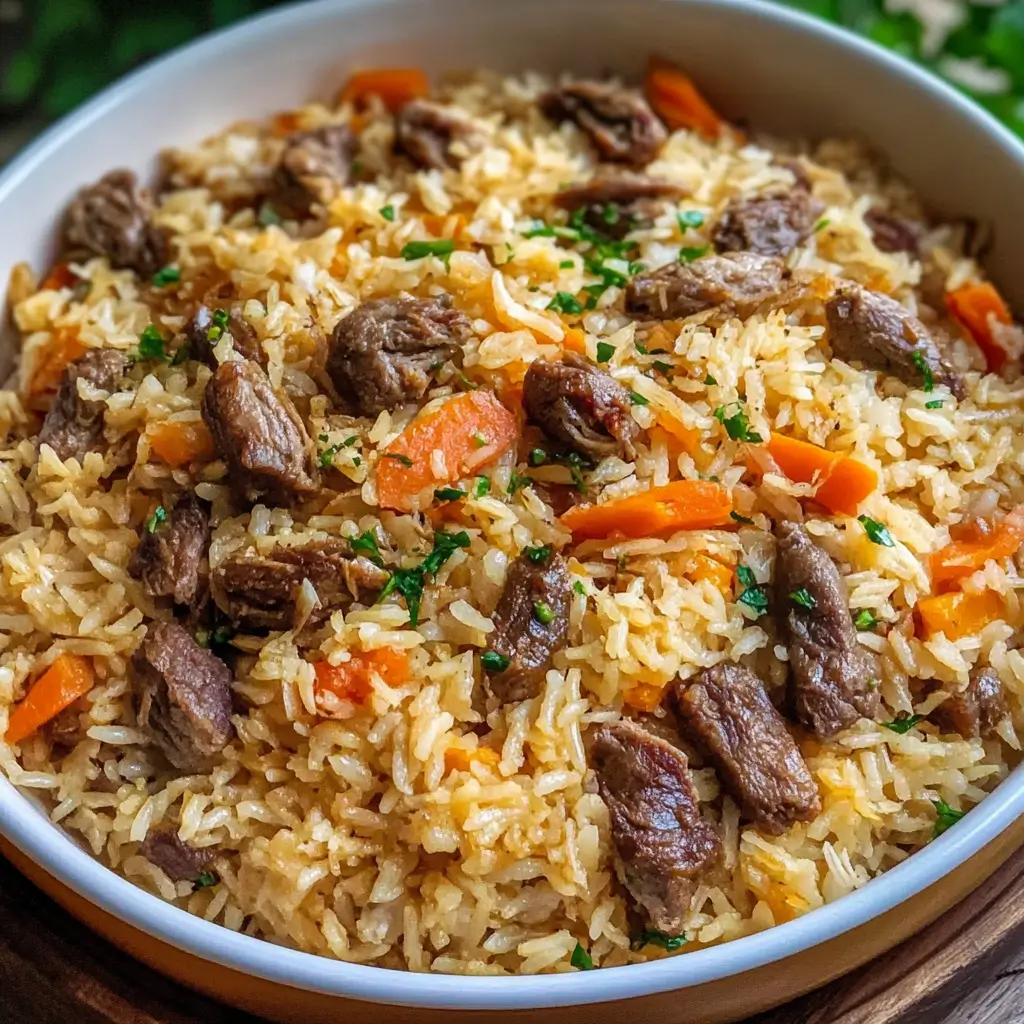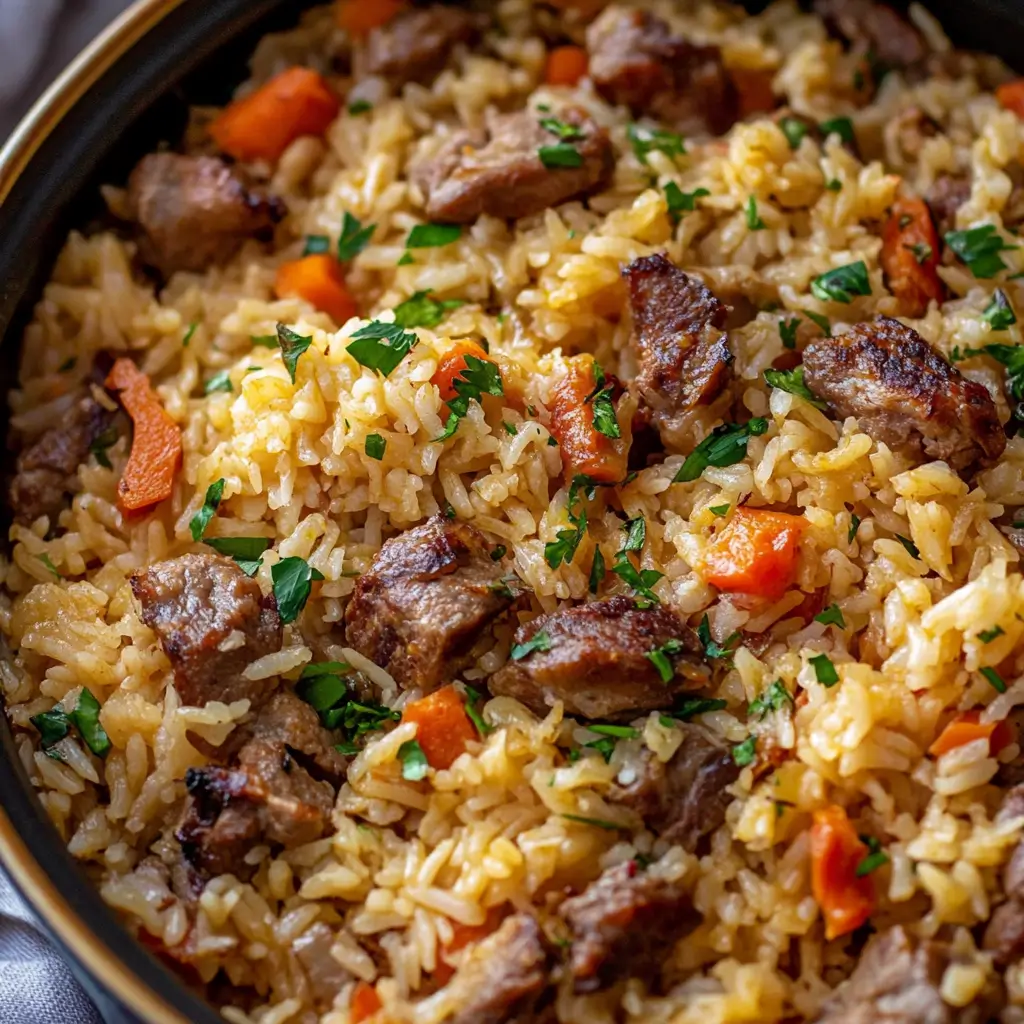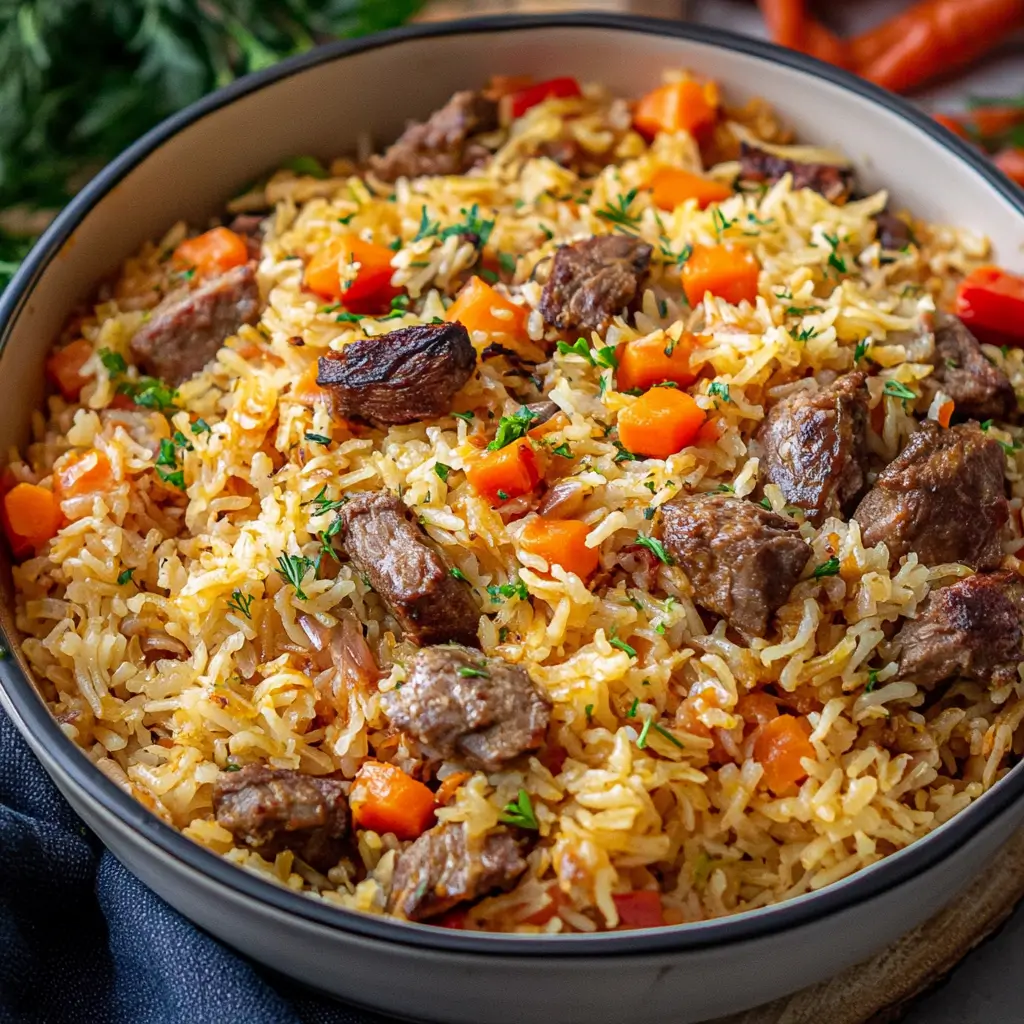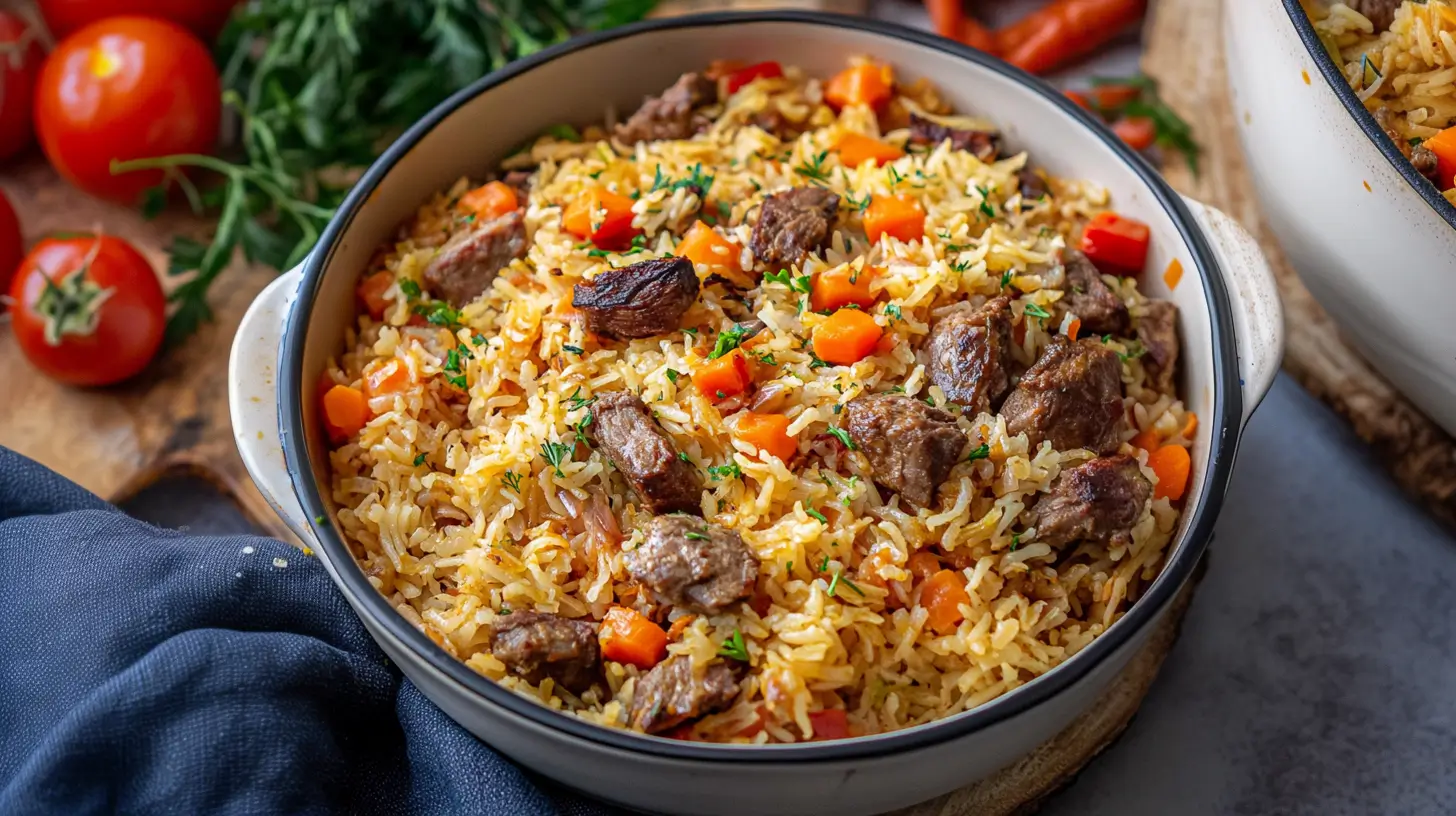When it comes to dishes that have stood the test of time, plov is one that continually holds its place as a favorite in homes and restaurants alike. With roots stretching deep into the rich culinary history of Central Asia, plov is more than just a dish; it’s an experience. From the moment you begin cooking this hearty, flavorful meal, the air becomes filled with the warmth of tradition. Whether you’re making plov for a family gathering or just craving something comforting for yourself, it’s a dish that brings people together and offers a taste of history.
For many, preparing plov is a labor of love that connects generations. It’s a dish that has seen numerous variations over the centuries, each one adding its own personal touch. In this article, we will explore everything you need to know about making the perfect plov—from its rich history to the step-by-step recipe and even variations that you can try. By the end of this guide, you’ll have all the knowledge you need to recreate this timeless dish in your kitchen.

Table of Contents
What is Plov?
Understanding the Origins and History of Plov
Plov, also known as pilaf in some cultures, has a deep-rooted history in the culinary traditions of Central Asia, particularly Uzbekistan. It has long been considered a symbol of hospitality, often prepared for special occasions, large gatherings, and celebrations. This dish is not only a cornerstone of Uzbek cuisine but also a key part of many other cultures across Central Asia, the Middle East, and even parts of Eastern Europe.
Historically, plov was a dish that brought communities together. Its significance goes beyond mere food—it represents a connection to the past, to the people who first crafted this meal with love and care. Over time, plov’s popularity spread, and different regions began to make their own adaptations. From the addition of various meats to the use of spices and seasonings unique to each culture, plov’s diversity makes it a fascinating dish to learn about and prepare.
In many Central Asian countries, plov is often served during important gatherings, such as weddings, holidays, and major celebrations. Its comforting and filling nature makes it the ideal meal to feed a crowd, and its ability to be prepared in large quantities means that it’s perfect for family-style meals.
Key Ingredients You Need to Make Plov
- Rice: Long-grain varieties like basmati or a local variety are typically used. The rice is rinsed thoroughly to remove excess starch, ensuring a fluffy texture once cooked.
- Meat: Plov can be made with different types of meat, though lamb is the traditional choice. Beef, chicken, or even a vegetarian version using seasonal vegetables can be used as well.
- Carrots: The sweet, earthy flavor of carrots adds a nice contrast to the rich meat.
- Onions: These are sautéed until golden, contributing depth and sweetness.
- Garlic: Whole garlic cloves are often used, adding a subtle, fragrant undertone as they cook.
- Spices: Cumin, coriander, and sometimes cinnamon and cardamom are the backbone of plov’s warm and aromatic flavor.
- Broth: Beef or chicken broth is used to add richness and depth.
Essential Ingredients for Your Plov Recipe
Before you start cooking, gathering the right ingredients is essential. The following table provides a breakdown of the key ingredients you’ll need to create an authentic plov:
| Ingredient | Amount | Notes |
|---|---|---|
| Long-grain rice | 2 cups | Wash thoroughly to remove excess starch |
| Lamb (or your choice of meat) | 1 lb | Cut into cubes or chunks |
| Carrots | 2 large | Julienne or slice thin |
| Onions | 1 medium | Thinly sliced |
| Garlic | 4-5 cloves | Whole or slightly crushed |
| Cumin | 1-2 teaspoons | Ground |
| Coriander | 1 teaspoon | Ground or whole |
| Vegetable oil | 2 tablespoons | For sautéing |
| Broth (beef or chicken) | 4 cups | Adds richness and flavor |
Tip: Always use fresh, high-quality ingredients to enhance the overall flavor of your plov.
Step-by-Step Guide to Making Plov at Home
Preparing the Ingredients
To make sure your plov turns out perfectly, it’s helpful to prep all the ingredients beforehand. This way, the cooking process will be smooth, and you won’t feel rushed. Here’s how to prepare each ingredient:
- Rice: Wash your rice thoroughly in cold water. This removes excess starch, preventing the rice from becoming too sticky during cooking. Soak it in water for about 30 minutes for the best texture.
- Meat: Cut your lamb (or beef, chicken, etc.) into cubes or chunks. Season it lightly with salt and pepper.
- Vegetables: Peel and julienne the carrots. Slice the onions thinly, and crush or chop the garlic.
- Spices: Measure out your cumin, coriander, and any other spices you plan to use.
Cooking the Plov
Now that everything is prepped, it’s time to cook your plov. This process involves layering the ingredients and cooking them in stages to ensure the flavors develop.
Step 1: Sauté the Meat
In a large pot or Dutch oven, heat 2 tablespoons of vegetable oil over medium-high heat. Add the cubed meat and cook it until browned on all sides. This searing process locks in the flavor and helps the meat stay juicy as it cooks.
Step 2: Add the Vegetables
Once the meat is browned, add the onions and carrots to the pot. Sauté them for about 5 minutes, stirring occasionally, until the onions become soft and translucent. Add the crushed garlic and cook for another minute, allowing the flavors to meld.
Step 3: Stir in the Spices
Now, it’s time to add the spices. Stir in the cumin, coriander, and any other spices you’re using. This will create a flavorful base that will infuse the rice as it cooks.
Step 4: Layer the Rice and Add Broth
Layer the soaked rice over the vegetable and meat mixture, but do not stir. Pour the broth over the rice, making sure it’s evenly distributed. The broth should be enough to cover the rice by about an inch. Season with salt and pepper to taste. Bring the broth to a boil, then reduce the heat to low and cover the pot.
Step 5: Let it Cook
Allow the plov to simmer on low heat for about 30-40 minutes. During this time, the rice will absorb all the flavors from the meat, spices, and broth. Do not stir the rice; this helps it cook evenly and prevents the grains from breaking.
Step 6: Resting Time
Once the plov is done, turn off the heat and let it rest, covered, for 10 minutes. This helps the flavors settle and ensures that the rice is perfectly cooked.

Tips for Perfect Plov
- Avoid stirring the rice: Stirring can make the rice sticky. Instead, let the rice steam on top of the meat and vegetables.
- Use a heavy pot: A heavy-bottomed pot or Dutch oven helps distribute heat evenly, preventing burning and ensuring the rice cooks properly.
- Don’t skip the resting step: Letting the dish sit for 10 minutes after cooking ensures all the flavors meld and the rice firms up for perfect texture.
- Broth is key: The broth is where much of the flavor comes from. Opt for homemade beef or chicken broth if possible.
Variations of Plov Around the World
Plov isn’t a one-size-fits-all dish. Different regions of Central Asia, and beyond, have their own variations, allowing for endless customization. Here are some popular variations:
Uzbek Plov
The most well-known variation, Uzbek plov, uses lamb as the main protein and features a generous amount of carrots and onions. The dish is typically served with a side of fresh salad or a dollop of yogurt to balance the richness.
Tajik Plov
Tajik plov often uses a mix of meat and vegetables. It’s also common to add dried fruits, such as raisins or apricots, for a sweet contrast to the savory flavors.
Russian Plov
In Russia, plov is often made with beef or pork and contains more vegetables. This version is usually less rich than its Uzbek counterpart and may include ingredients like bell peppers and tomatoes.
Vegetarian Plov
For a lighter version of plov, substitute the meat for seasonal vegetables like zucchini, eggplant, or bell peppers. You can also add nuts or dried fruits like raisins for an extra touch of sweetness.

Health Benefits of Plov
Plov is more than just a flavorful dish; it can also provide various health benefits, depending on how you make it. Here’s a breakdown of some of its key health benefits:
- High in Protein: The meat, particularly lamb, provides a great source of high-quality protein, which is essential for muscle growth and repair.
- Rich in Carbohydrates: The rice offers a steady source of energy, making plov a great choice for a fulfilling meal.
- Packed with Vegetables: Carrots and onions are packed with essential vitamins and minerals. Carrots, in particular, are high in vitamin A, which supports vision health.
- Customizable for Dietary Needs: You can easily adjust the recipe for different dietary preferences, such as gluten-free, low-carb, or vegetarian diets.
Frequently Asked Questions About Plov Recipe
Can I use other types of rice for plov?
Yes, while long-grain rice is the traditional choice, you can substitute with jasmine rice or any other long-grain variety. Avoid short-grain rice, as it can become too sticky.
Can I make plov in a slow cooker?
Yes, plov can be made in a slow cooker. Brown the meat and sauté the vegetables before transferring everything to the slow cooker. Cook on low for 4-5 hours for a hands-off approach.
Can I add dried fruits to plov?
Definitely! Adding raisins, apricots, or even dates can give the dish a sweet touch that balances the savory flavors. Simply add them in step 4 when you layer the rice.
How do I store and reheat leftover plov?
Plov can be stored in an airtight container in the refrigerator for up to 3 days. To reheat, place it in a pot over low heat, adding a splash of broth to revive the moisture.
Conclusion
Making plov at home isn’t just about cooking; it’s about creating an experience. With its rich flavors and satisfying textures, plov brings people together in a way few other dishes can. Whether you stick with the classic Uzbek version or create your own twist, plov is guaranteed to impress. So why wait? Gather your ingredients and get cooking today — your taste buds will thank you.

